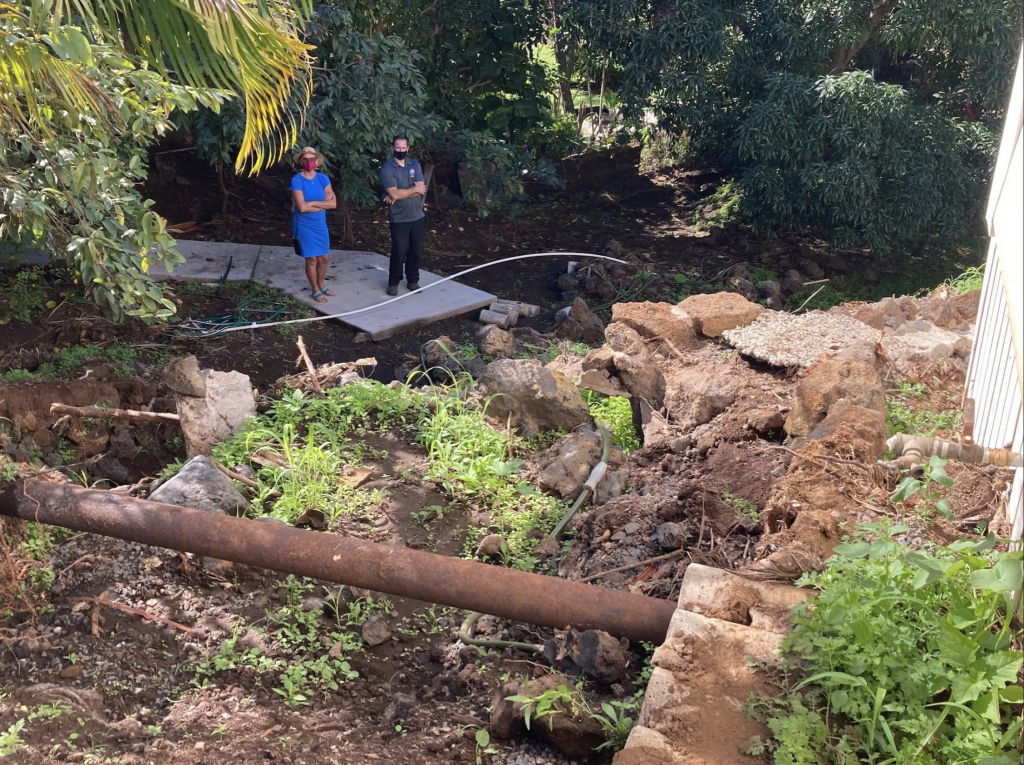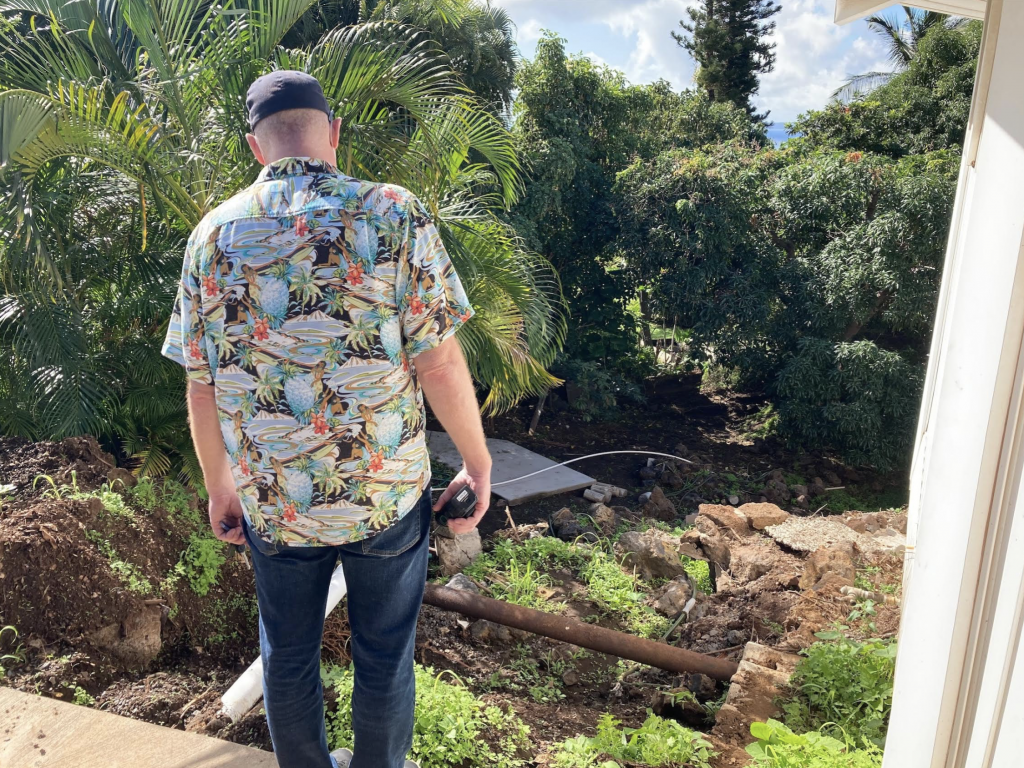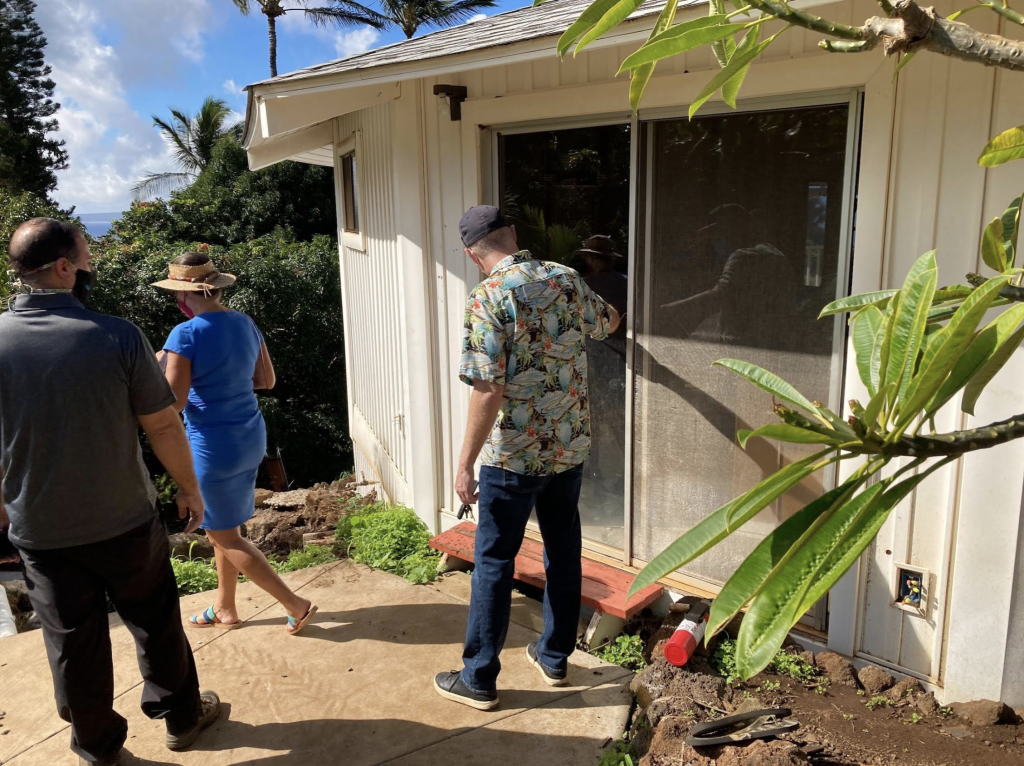Teams deployed on Maui to assess private property damage from ‘Kona Low’ storm
Teams of state, county and federal workers returned to Maui to examine private property damage caused by the “Kona low” weather system that dumped more than 20 inches of rain on areas of Hawaiʻi last month.
Organized by the Hawaiʻi Emergency Management Agency, the teams are expected to visit different sites in Maui County than were viewed during a Dec. 20 assessment targeting damaged highways and other public property.
These preliminary assessments help state, county, and federal leaders determine if the storm caused enough damage to meet the requirements for a federal disaster declaration. If approved, a declaration could potentially unlock government assistance programs offering grants or loans to local governments, property owners, or businesses.
Agency leaders say this process takes time and there is no guarantee that government financial assistance will be made available. Data collection and review will continue in the weeks ahead.
“Recovery from the recent storm is ongoing and takes the continuing cooperation of our whole community as we assess the storm’s impact,” said Luke Meyers, Administrator of HI-EMA in a press release. “We are grateful for all the support and coordination across agencies.”
Preliminary damage assessments of public property in Maui County and the City and County of Honolulu were conducted in December as a result of the “Kona low,” which brought high winds and surf, flooding, and landslides to the islands over several days starting Dec. 4, 2021.
HI-EMA continues to urge residents to document their damage with photos/video and contact their insurance agency if they haven’t already done so.
Additionally, each County has online tools to report residential and business damage. These forms are used only to collect information that will help local officials understand the damage that occurred and impacts on the community; they are not applications for assistance.



















